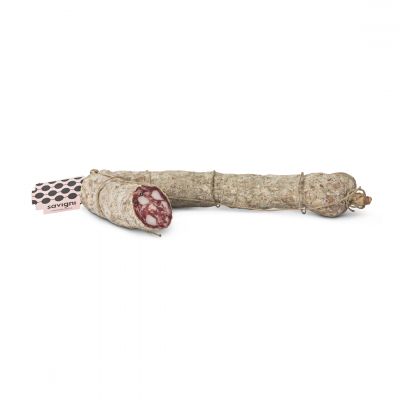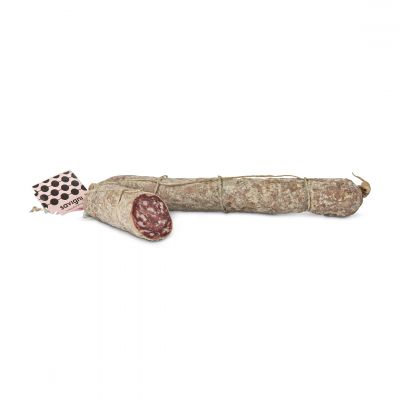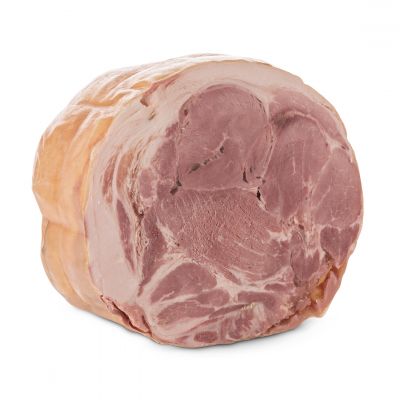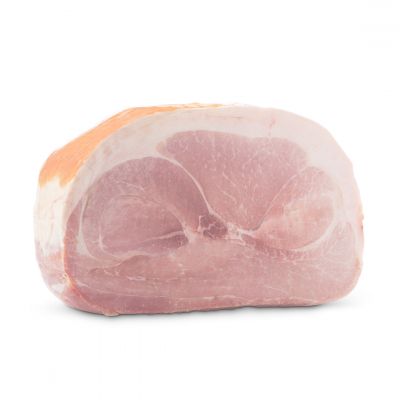A very short supply chain: the charcuterie produced by Savigni family are made only from their own pigs, wild bred in the Apennines of Tuscany
⏱ 4 MINUTES READING
Pavana is a small village lost in the Tuscan-Emilian Apennines, a few people and a charcuterie company: that of the Savigni family.
We have been working with the Macelleria Savigni for several years, mainly with salame and finocchiona from Cinta Senese, however in recent times we felt the need to strengthen a little the relationship with this company of great depth and potential.
So we got a move and we organized a visit with the whole assortment team.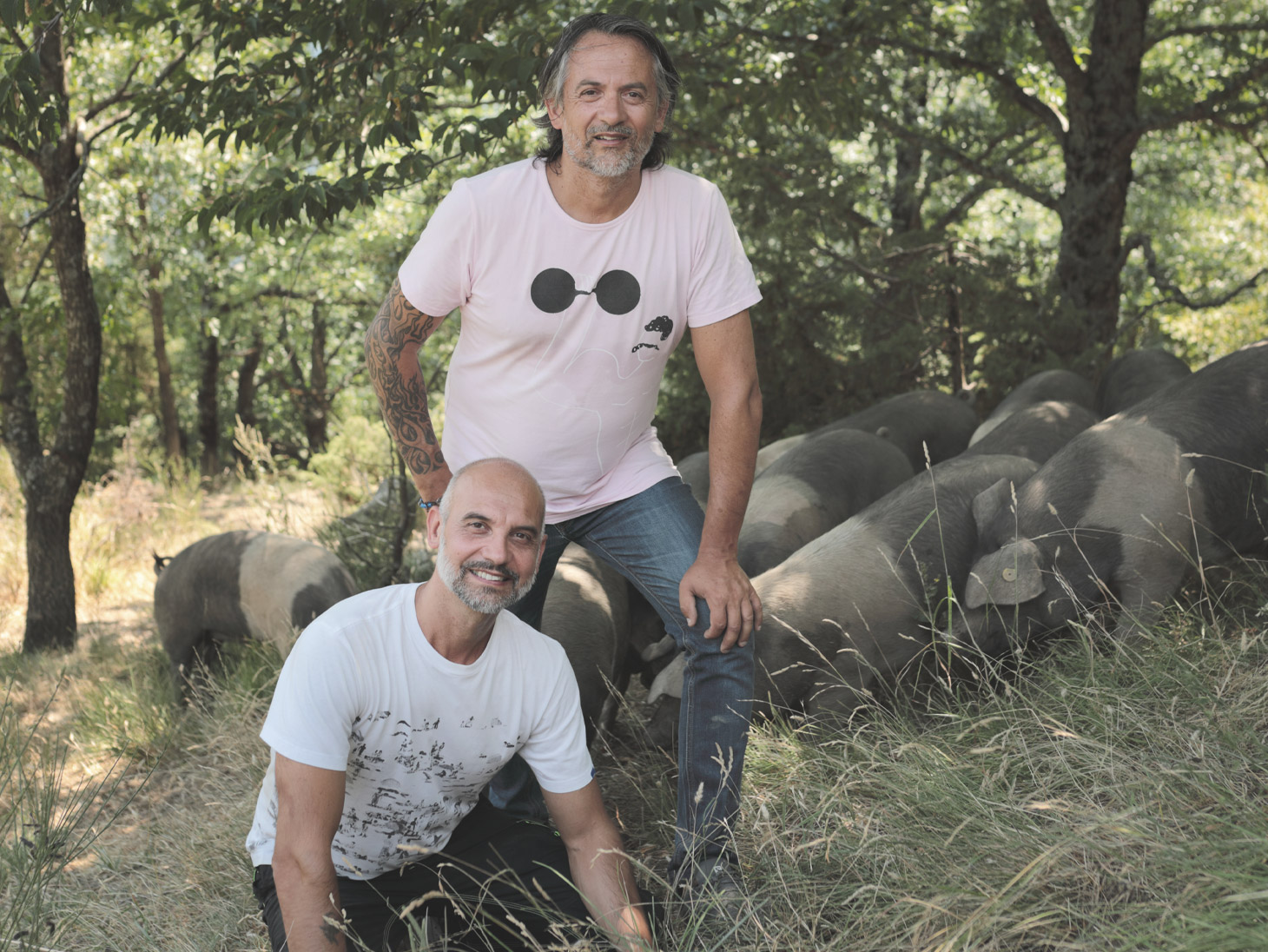 As often happens, from these meetings we not only bring home new products, but also many hints for reflections, research directions and a good dose of emotional energy that each producer gives us.
As often happens, from these meetings we not only bring home new products, but also many hints for reflections, research directions and a good dose of emotional energy that each producer gives us.
We meet Mileto and Nicolò Savigni in the late morning in Pavana at their factory. We have no other scheduled commitments, we can dedicate the whole day to them and so we decide in that moment how to organize the visit: we immediately visit the production site and have a bite for lunch before we go to the mountains, in the San Marcello Pistoiese area, above Spignana, in the northern part of Tuscany.
Two years ago, here in the mountains, the Savigni’s have purchased a hundred hectares of land, meadows and woods between 400 and 1000 meters above sea level.
In this place they raise their Cinta Senese and Sambucano pigs with organic methods: no use of antibiotics, GMOs, artificial insemination and birth cages; the pigs are bred in the wild, with an integration of organic fodder.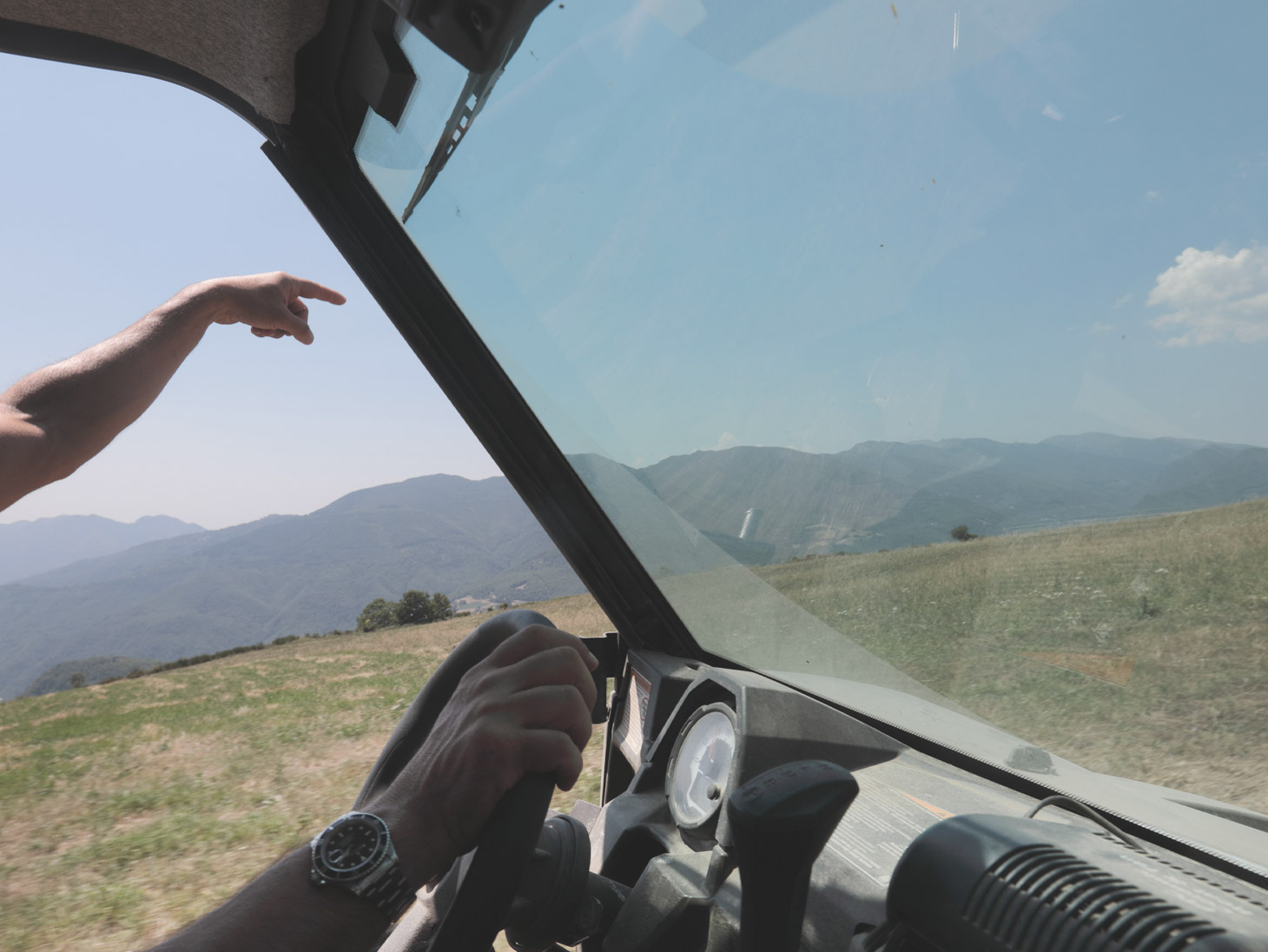 Down to the valley the production plant has been created over the years in a building, almost in the center of the town, and it is organized on two floors. We enter guided by Mileto, who follows the production in the company, in time to witness the tying of the pancetta, still done strictly by hand.
Down to the valley the production plant has been created over the years in a building, almost in the center of the town, and it is organized on two floors. We enter guided by Mileto, who follows the production in the company, in time to witness the tying of the pancetta, still done strictly by hand.
The family works the whole half carcasses: the pigs, coming exclusively from owned farms are slaughtered on Monday mornings, but production begins on Tuesdays to allow the meat to cool evenly.
A dozen pigs are slaughtered every week, addressed to different productions. The one that thrilled us the most, right off the first taste at Taste in Florence, is that of the local mountain cooked ham, obtained from Sambucano pigs, among the last born products in the Savigni house. Until some time ago they outsourced the cooking process, but now a small expansion of the factory has been made to manage the complete production process, including cooking.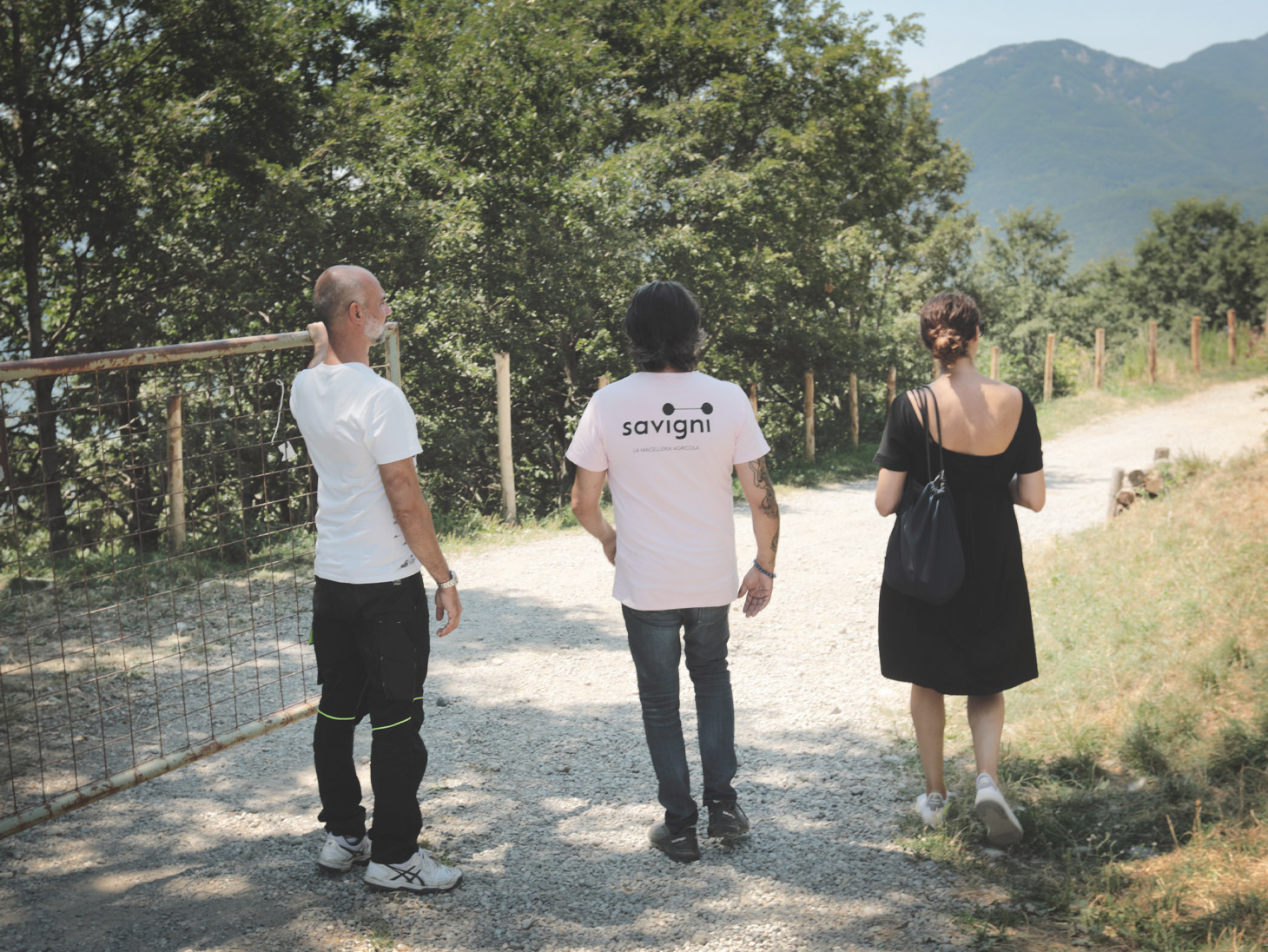 Mileto explains us that the production process is very slow and lasts about seven days, not just a few hours: after cutting and churning, the thigh rests for about a week. The choice to work only own meat, added to the care and slowness of the process limits the availability of the product: therefore only 20 hams are produced every week. The hams could be labelled with the brand “di Montagna” (from the Mountain) because the Sambucani pigs are really bred in the mountains, up to 1000 meters above sea level. Sambucani are rustic pigs obtained from a cross between different breeds and which name was attributed by Savigni. The perfume of the ham first and the taste on the palate then, bring us back to ancient sensations: those of well-cooked meat, almost roasted, and of fragrant and melting fat. It is a top quality ham, cooked in a mould and available only in half vacuum packed.
Mileto explains us that the production process is very slow and lasts about seven days, not just a few hours: after cutting and churning, the thigh rests for about a week. The choice to work only own meat, added to the care and slowness of the process limits the availability of the product: therefore only 20 hams are produced every week. The hams could be labelled with the brand “di Montagna” (from the Mountain) because the Sambucani pigs are really bred in the mountains, up to 1000 meters above sea level. Sambucani are rustic pigs obtained from a cross between different breeds and which name was attributed by Savigni. The perfume of the ham first and the taste on the palate then, bring us back to ancient sensations: those of well-cooked meat, almost roasted, and of fragrant and melting fat. It is a top quality ham, cooked in a mould and available only in half vacuum packed.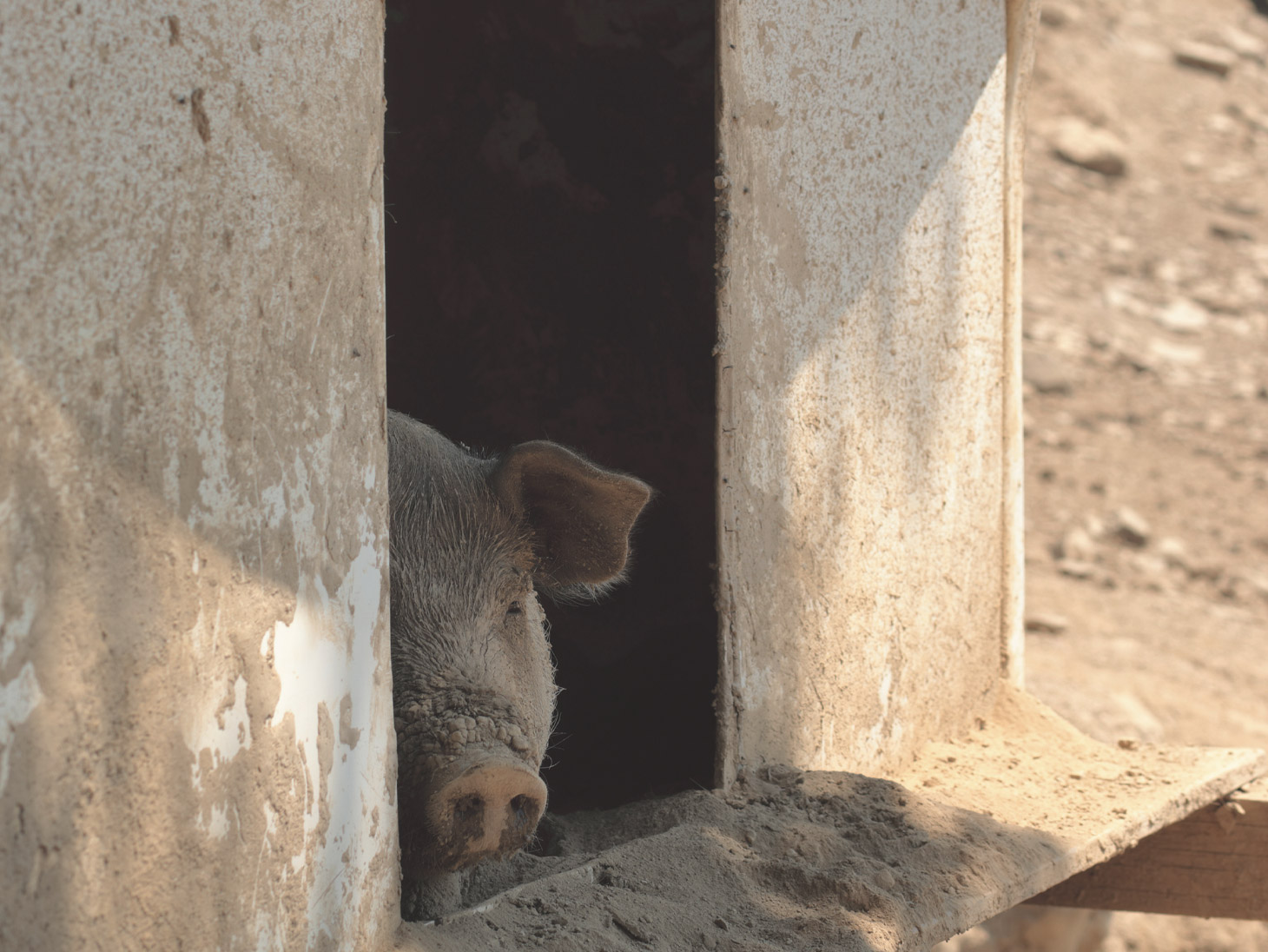 We continue the visit and entering the cells we notice the great variety of products, much better than leafing through a catalogue!
We continue the visit and entering the cells we notice the great variety of products, much better than leafing through a catalogue!
You know, we use to say that nothing is wasted from the pig and for this reason the processes that the Savigni do are many.
So we finally reach effectively the Fattoria Bonaria, located in the mountains, in the locality of Butale, where the pigs born on the farm are wild-raised in the holm oak and oak forest. The climb takes about an hour, which passes quickly thanks to Nicolò's tales of local characters.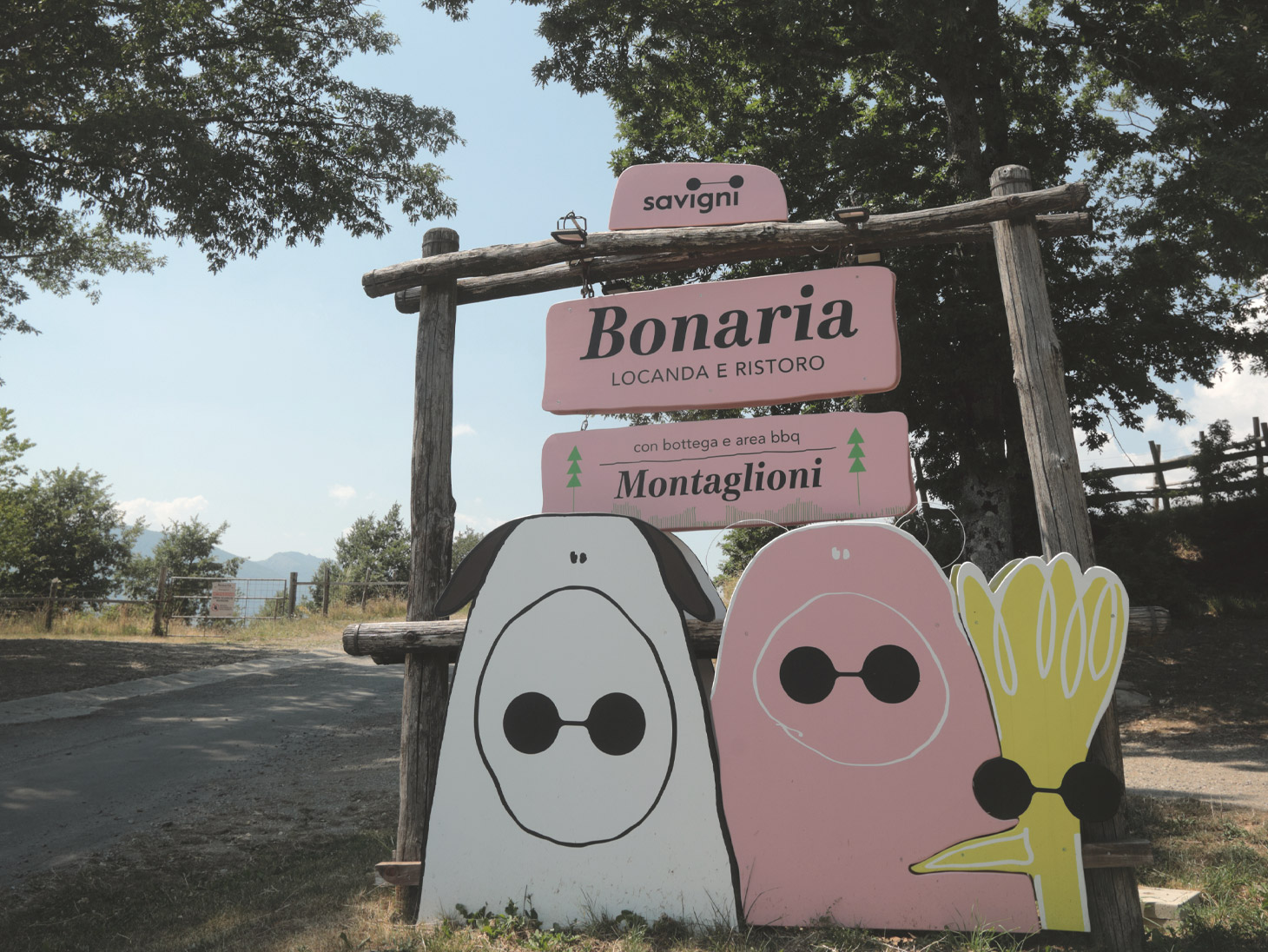 The valley that we cross is very narrow and beautiful from a naturalistic point of view. Nature paws, but we certainly do not expect to find the pristine clearing where the family farm is located. Everything is pink, as per company colours, and furnished like a delightful and welcoming doll's house.
The valley that we cross is very narrow and beautiful from a naturalistic point of view. Nature paws, but we certainly do not expect to find the pristine clearing where the family farm is located. Everything is pink, as per company colours, and furnished like a delightful and welcoming doll's house.
We can't stop looking around us and in the shaded clearings we begin to see the first pigs taking their siesta.
Nicolò opens the first enclosure for us; the pigs' area is equipped with a double fence to avoid contact with wild animals and in particular with wild boars, to safeguard the pigs from any contagions, in particular from swine fever which has been worrying, and not a little, many breeders in recent months.
In each enclosure there is at least one fountain where pigs can drink, which also creates streams of water and mud "pools" with a sight on the Apennines, where pigs dive with pleasure to escape the summer heat. In the same way, someone seeks shelter from the heat in the various houses located here and there among the oaks, shelters with raised wooden floors where pigs can take refuge even when it rains. Pigs freely feed on acorns, chestnuts, grass, berries and truffles, but natural food is not enough and is therefore supplemented with organic grains.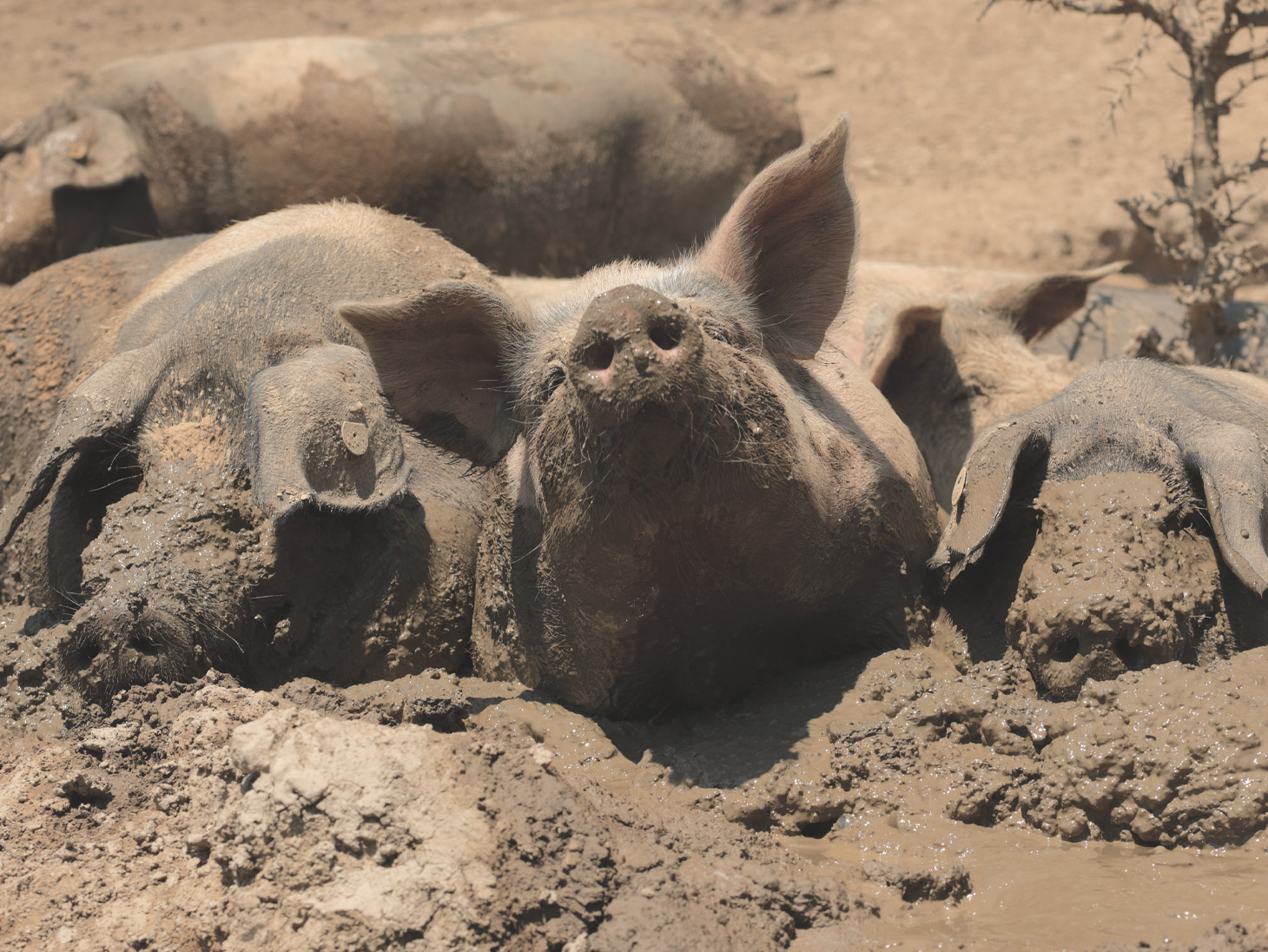 The slope of the land is impressive and also it is the agility of these pigs, despite their size: this is because both the Cinta Senese and the Sambucano are rustic breeds, suitable for wild breeding. "A pig accustomed to intensive breeding would not even be able to walk on these grounds" - says Nicolò.
The slope of the land is impressive and also it is the agility of these pigs, despite their size: this is because both the Cinta Senese and the Sambucano are rustic breeds, suitable for wild breeding. "A pig accustomed to intensive breeding would not even be able to walk on these grounds" - says Nicolò.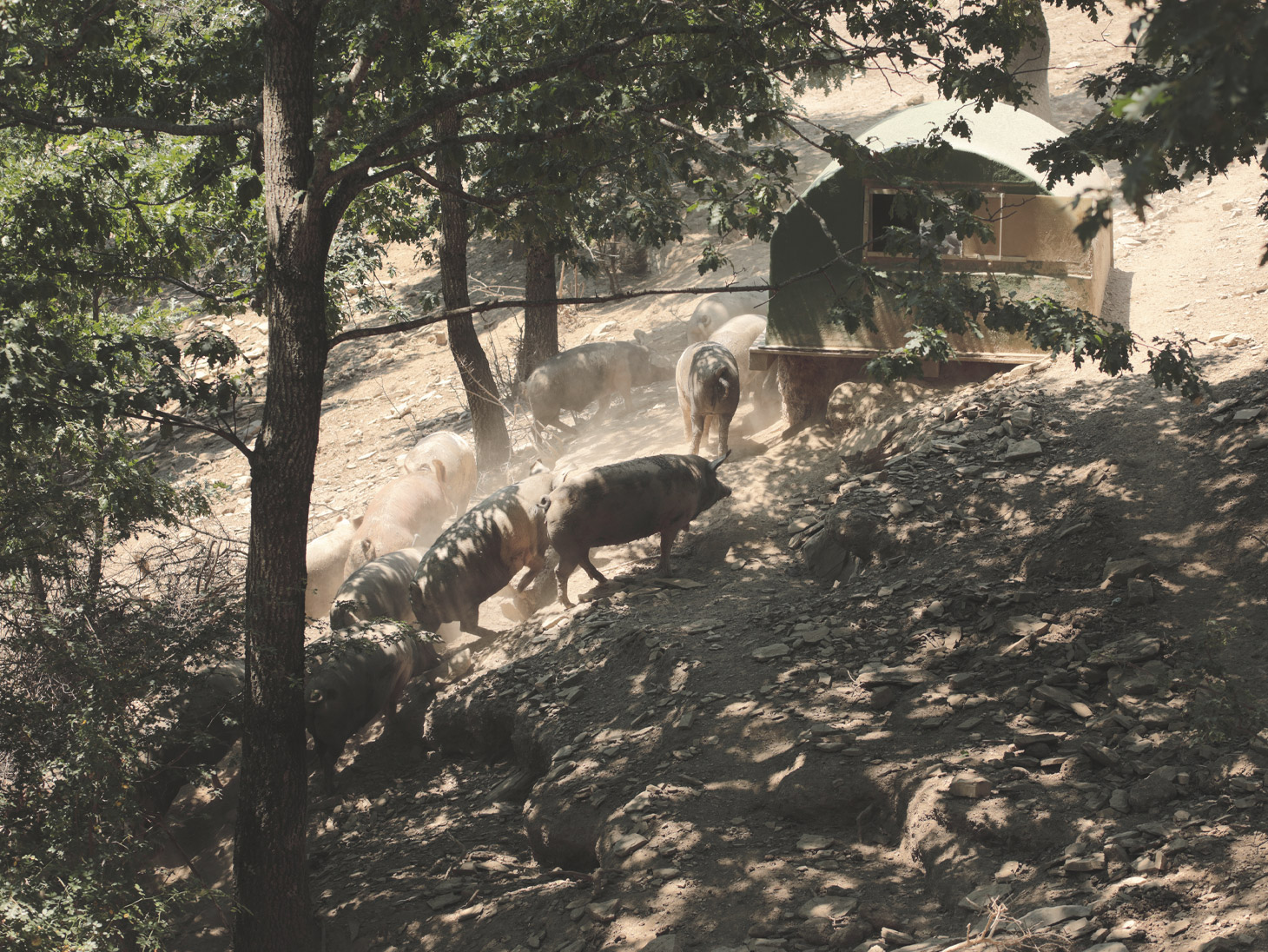 We go up again in altitude, this time Mileto accompanies us with the quad with a decidedly sporty driving. We take a dirt road, cross the meadows where their calves of various breeds graze, including the Limousine, we pass by the construction site of their new b&b, an old hostel that they are renovating, and we reach over 1200 meters above sea level. We go down a little further into the next fenced area, where the pigs hide among the grass and the vegetation, which is much denser here. We try to approach with caution to take the cover photo, which however doesn't do justice to the beauty of the place. Between the branches you can see the entire valley and the surrounding mountains.
We go up again in altitude, this time Mileto accompanies us with the quad with a decidedly sporty driving. We take a dirt road, cross the meadows where their calves of various breeds graze, including the Limousine, we pass by the construction site of their new b&b, an old hostel that they are renovating, and we reach over 1200 meters above sea level. We go down a little further into the next fenced area, where the pigs hide among the grass and the vegetation, which is much denser here. We try to approach with caution to take the cover photo, which however doesn't do justice to the beauty of the place. Between the branches you can see the entire valley and the surrounding mountains.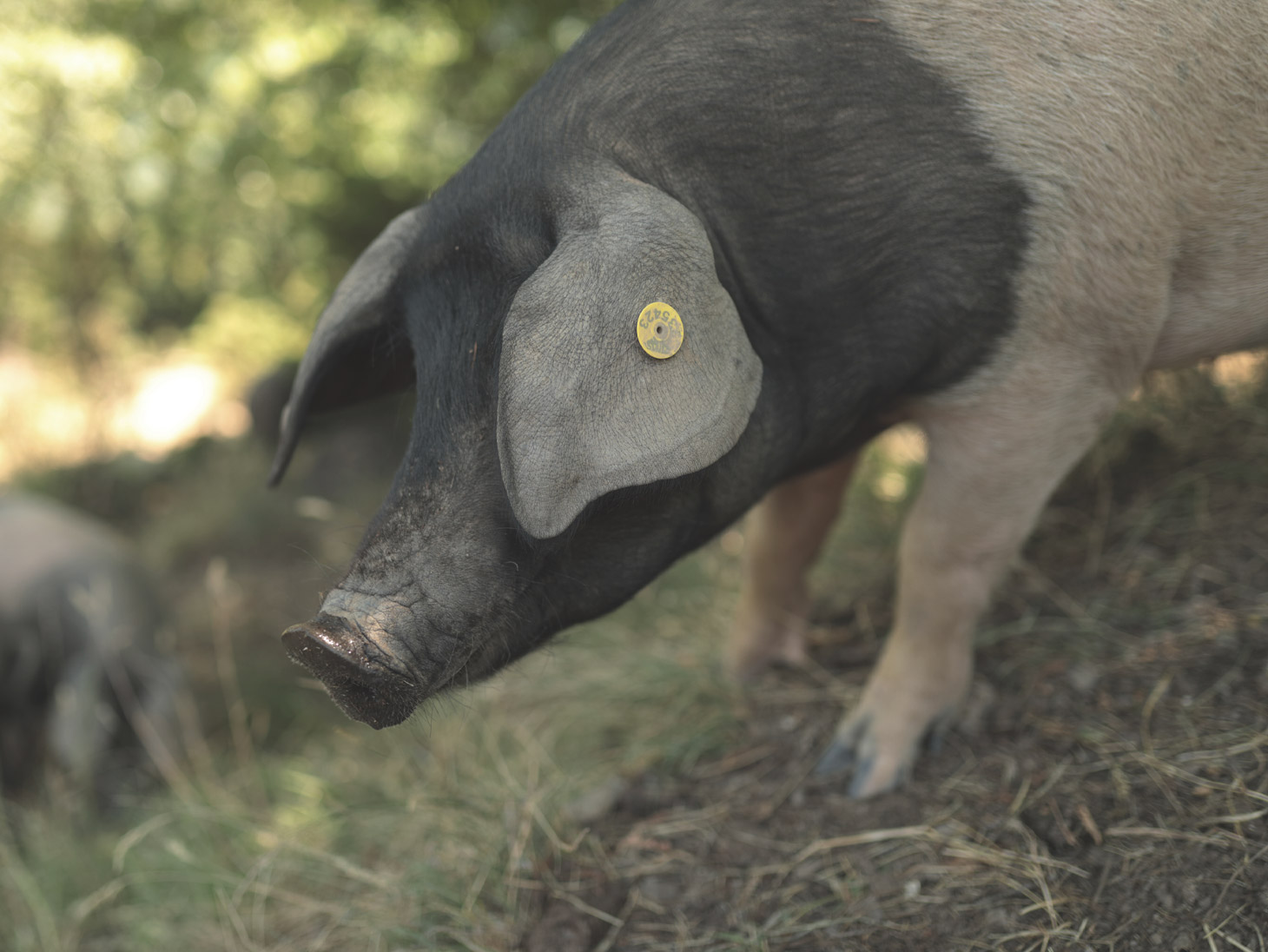 We go back down to the farm and, near the first enclosure, we are lucky enough to be able to visit the pig nursery, a stable with boxes for horses where the Savigni have now created a quiet place for the births of the sows. One of these was nursing a dozen pigs of a few days. Wonderful!
We go back down to the farm and, near the first enclosure, we are lucky enough to be able to visit the pig nursery, a stable with boxes for horses where the Savigni have now created a quiet place for the births of the sows. One of these was nursing a dozen pigs of a few days. Wonderful!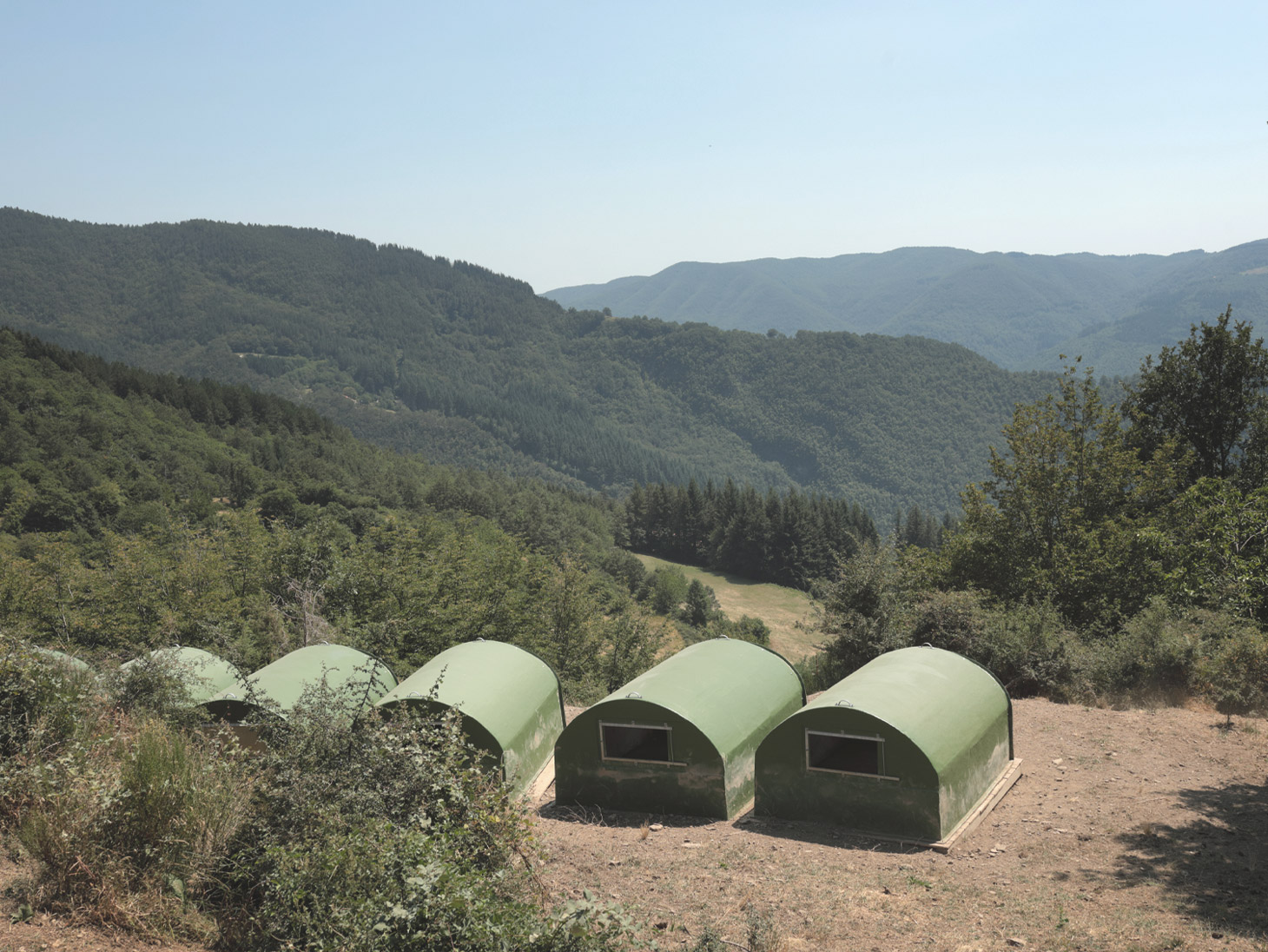 We finally greet Nicolò and Mileto, thanking them for the time they have dedicated to us and we return in Valsana, already discussing about the next products entries. It is true that working for many years with a producer does not mean knowing him completely: every meeting is really an opportunity to learn something new and make some beautiful discoveries.
We finally greet Nicolò and Mileto, thanking them for the time they have dedicated to us and we return in Valsana, already discussing about the next products entries. It is true that working for many years with a producer does not mean knowing him completely: every meeting is really an opportunity to learn something new and make some beautiful discoveries.
Alessandro De Conto
Sales Director




